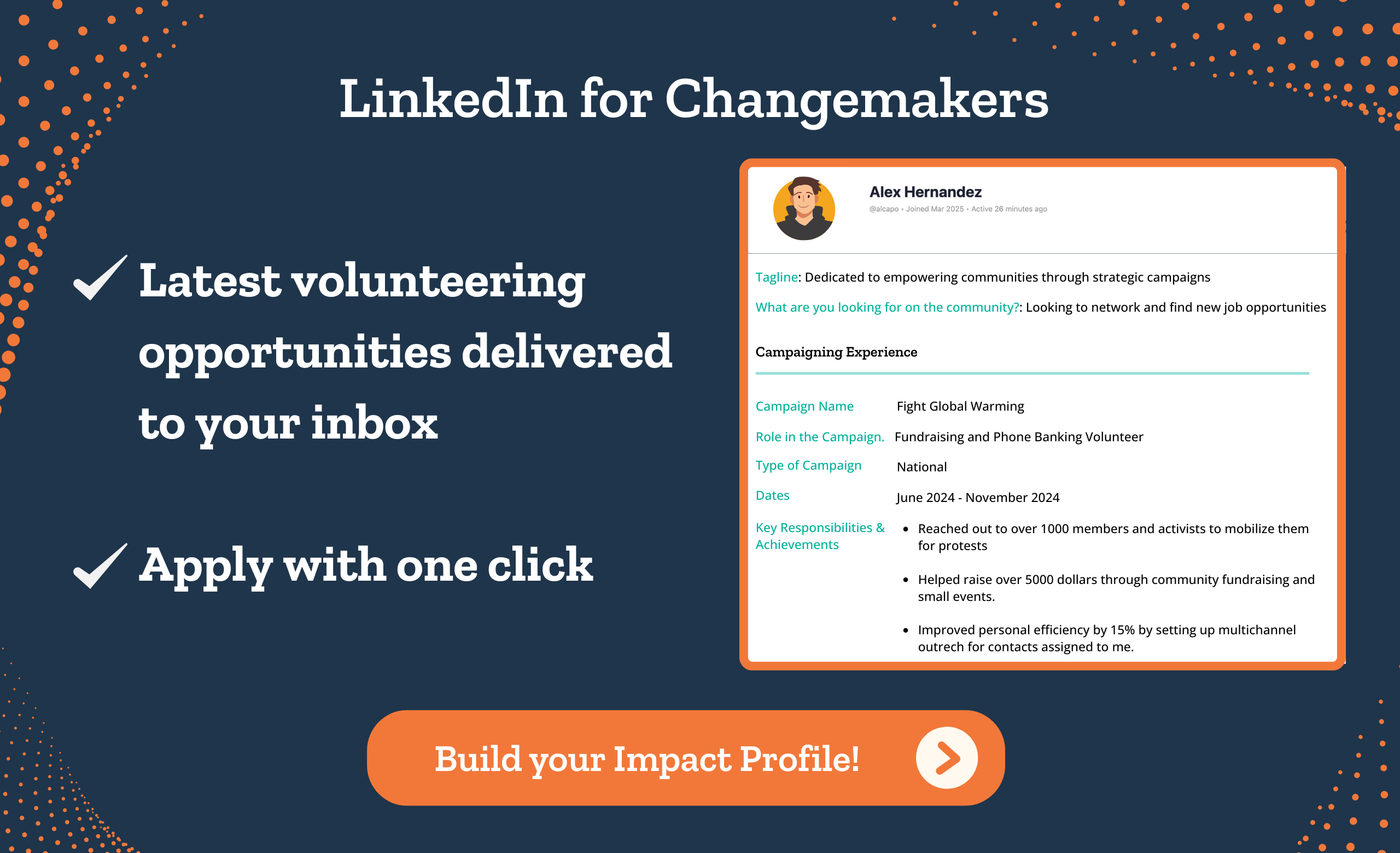Table of Contents
A political hotline is crucial for answering voter concerns, mobilizing support, and addressing urgent issues in real time. And they remain popular even in today’s age: During the 2020 election season, the Election Protection hotline (866-OUR-VOTE) managed by the Lawyers’ Committee for Civil Rights Under Law received over 228,800 calls from January 1 through Election Day.
This significant number of calls underscores the importance of a dedicated hotline to address voter concerns and ensure electoral participation.
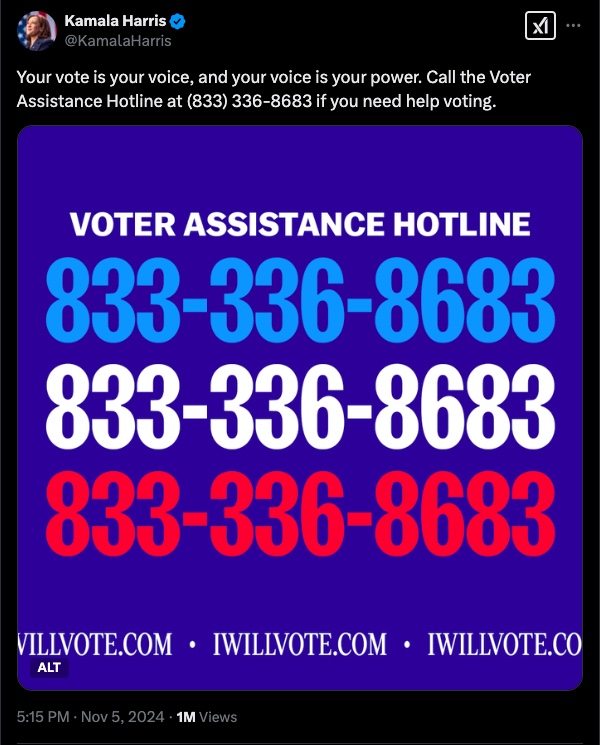
A well-run hotline can be the difference between an engaged electorate and a disconnected one, whether it provides information on voting procedures, handles press inquiries, or responds to public concerns.
How to set up a political hotline
In this guide, we’ll walk you through the process of how to set up a political hotline of your own—covering everything from choosing the right technology to training volunteers.
Decisions you need to make before launching your hotline include:
- Deciding the location of each hotline.
- Deciding the timings of each hotline (Running them 24/7 can be wasteful. It is rare for a large number of voters to have urgent doubts at 2 am on a Wednesday. )
- Hiring and training adequate staff to run the hotline during your chosen operating hours.
- Selecting a call centre software to run the calls. (CallHub, of course!)
With these things in place, you are ready to launch your political hotline. Whether running a local campaign or supporting a national movement, these steps can help you stay connected and responsive to the people who matter most: the voters.
So let’s start with step one – the phone numbers.
Get a number – Toll-free vs renting a political hotline
Toll-free numbers eliminate long-distance charges for fixed-line callers in the US and Canada, making it easier for people outside the area to call and exponentially increasing your reach. However, toll-free numbers have a slightly higher cost than local numbers, so choosing between the two depends on your budget and audience.
| Looking to set up a toll-free number? |
| CallHub Support can help you set up one. Get in touch! |
However, you need to consider a few factors for a political hotline.
- Most voters (like most people) use mobile numbers to make calls so that they would be charged air-time for a toll-free number anyway.
- Local number hotlines for specific communities or locations make the campaign more approachable in those demographics than a universal hotline.
- Realistically, other than a Presidential campaign, how many campaigns need input from voters nationwide?
So the cheaper and more approachable method is to rent a local number, and advertise it in its appropriate geography.
CallHub lets you rent a number through just a few clicks. Here’s how.
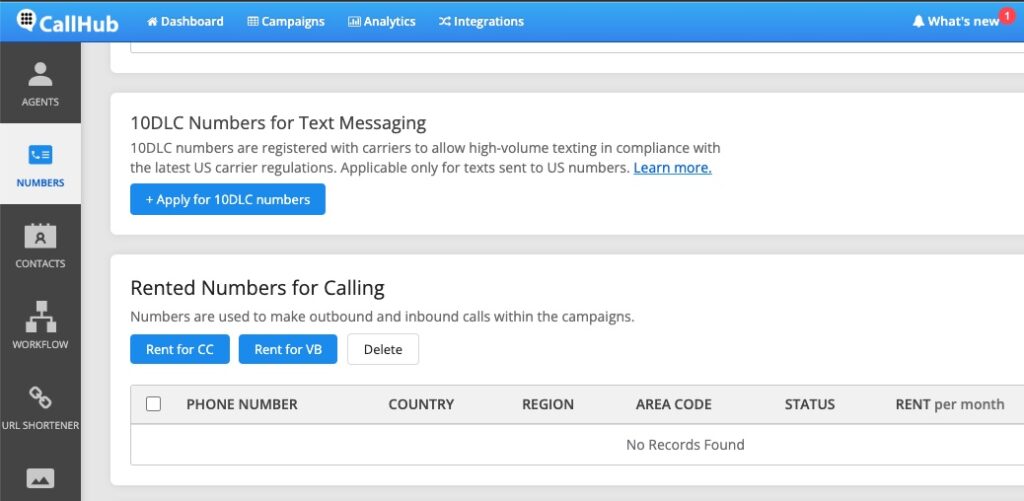
- Log in to your CallHub account and navigate to the ‘Numbers’ section in the left menu.
- You can see all the numbers you have rented, and their details
- Choose the ‘Rent for CC’ option to rent a number for a Calling Campaign.
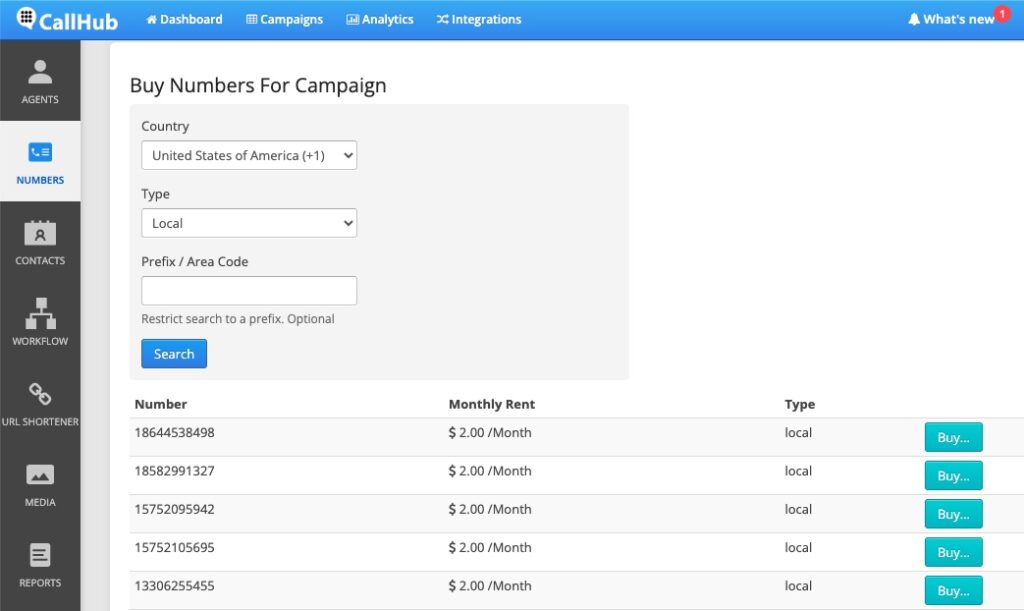
- Once you select the type of number you want (local or mobile), and specify the area code you are looking for, you will get a list of numbers available to rent. Simply select the ones you like.
| The rent for the phone number is deducted from the credits in your account every month. If your account does not have enough credits for the rent, the phone number will be automatically removed from the account. |
Now that you have rented the needed numbers, you can proceed to the next step – getting your answers right.
Set up a campaign: Launching a political hotline
Now that you have your number and trained your staff, you can begin to set up your political hotline, through the call centre software your campaign has chosen.
In CallHub, this is as easy as logging in and launching a calling campaign under ‘Call Center. Give it a memorable name to kick things off.
For example, in the sample below, the name indicates this is a hotline, for the 2nd district in California, and shows the last four digits of the rented number used by this campaign.
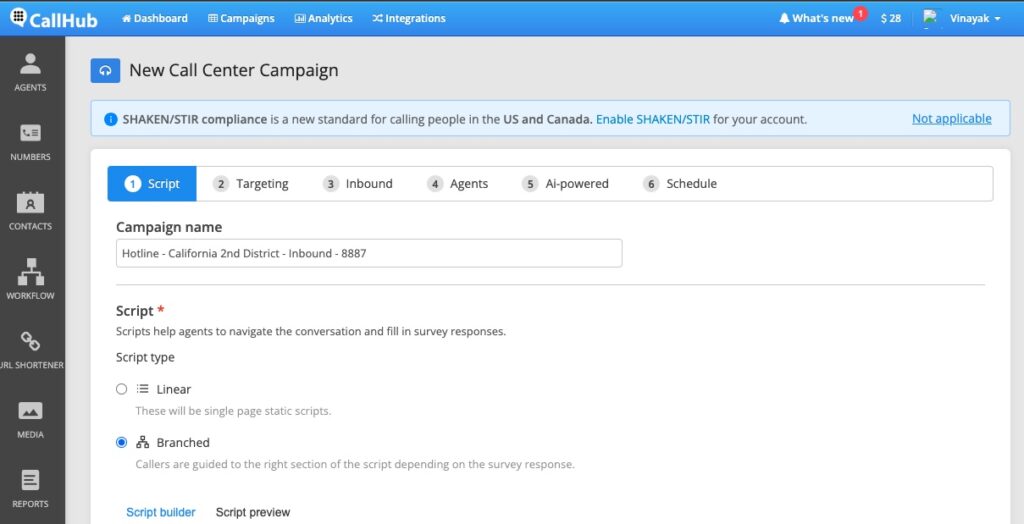
Branching scripts: Crucial to the hotline’s success
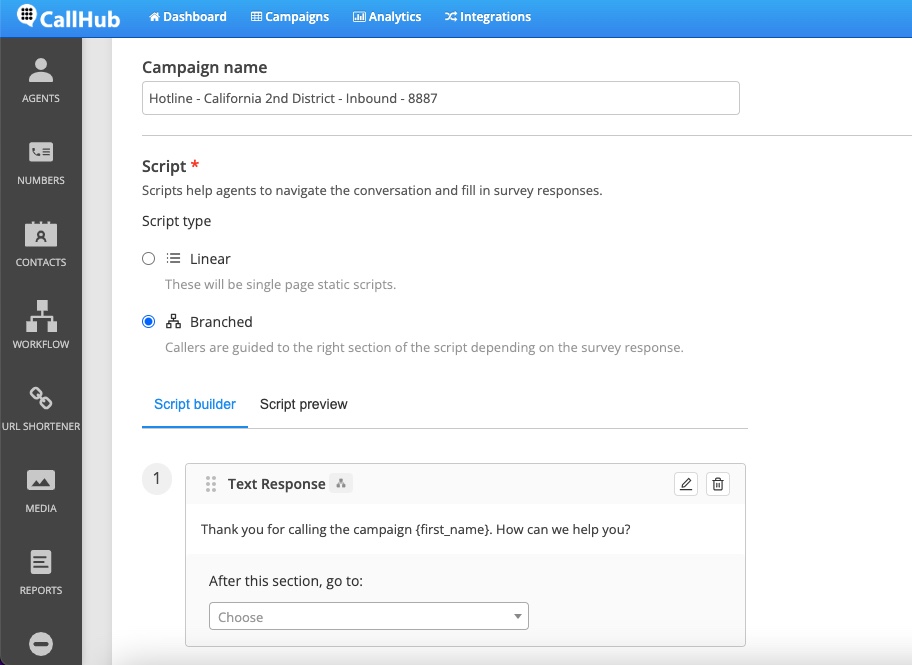
Every script will have an introduction and an outro for agents to recite to callers. But beyond that, how a script is structured ensures the success of your hotline.
The number one purpose of potential voters calling your political hotline is to get answers to questions on policy or something the candidate has said.
Secondary purposes include details like:
- When is voting day?
- Where is my voting booth?
- Can I get a pick up to my voting booth?
- How do I register to vote?
- What IDs are needed to vote in America?
It is critical for your staff to not only have all of these answers, but have a means to be able to give these answers quickly. A branching (or branched or dynamic) script is the only solution in such cases.
Campaign managers and policy makers should make an extensive list of answers for every question they feel a potential voter will ask. They can then feed these questions into a dynamic script.
When agents answer calls, they can then quickly jump to the relevant answer as soon as the question is asked, keeping things running smoothly.

In the example above of a branched script, you can see the campaign has added a standard introduction with a customization tag that displays the caller’s first name. And after that, the script has many sections, which the agent can jump to, depending on the question.
| Pro-tip: Training makes all the difference to a hotline. Your agents should be confident and well-versed on the significant issues. Invest time and money into a training program for agents before they start taking calls. This will pay dividends later. |
So now that you have your number and extensive script in place, you need one more technical feature enabled – a process for escalation.
Escalation: Patch-through calling in CallHub
No script is perfect; sometimes the questions can be out of left field. At such a stage, the agent has two options. They can:
- Request contact details and schedule a separate callback for this voter.
- Patch the call with the campaign manager, or policy supervisor, who can answer the question.
Of these two options, the latter is the preferred since people call hotlines to get answers immediately.
A patch-through number is a phone number agents can transfer a call to or ‘patch-through’ to during a campaign. In CallHub, patch-through features allow agents to transfer to specific numbers, or dial any number they choose.
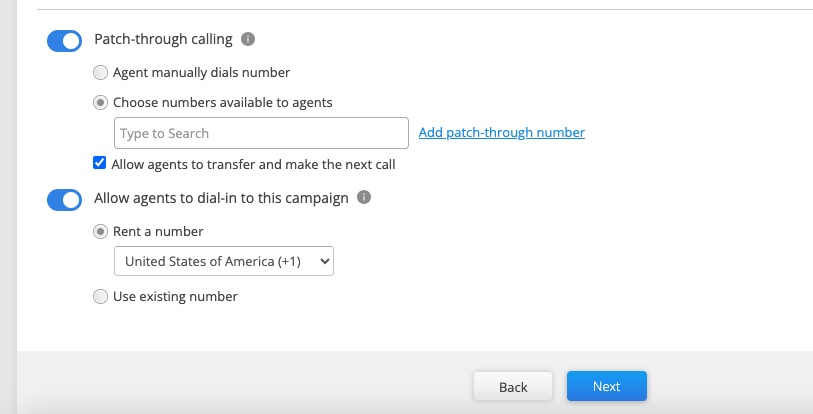
To add patch-through numbers, you must enable the setting ‘Allow agents to transfer and make the next call’, when creating a new call center campaign.
Agents can then see the option when they receive calls. The below is an example of an agent console, initiating a patch-through call.
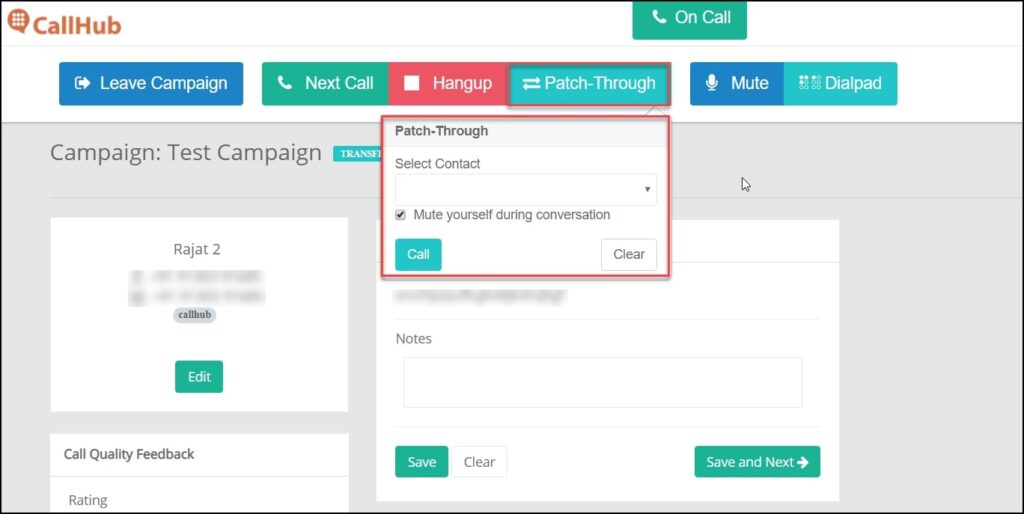
Step-by-step walkthrough: How to add patch-through numbers for a call center campaign.
Schedule your campaign: long term political hotline set up
Once you have these details, the last step to decide and set up is how long this hotline will be in operation in terms of months (or years), and what its operational hours are.
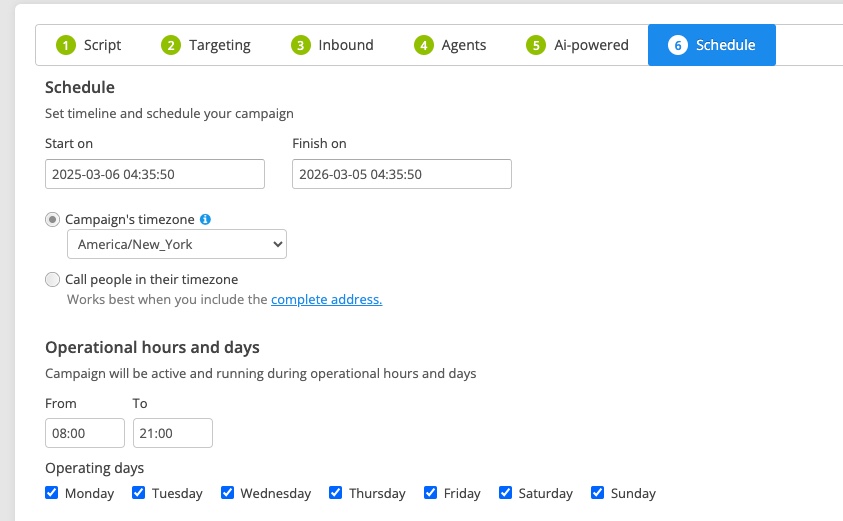
In the above example, in CallHub, you can choose the date range, the time zone of your campaign, and the times during which this hotline will run.
And that’s it. These steps will help you get the most out of your political hotline.
| Want to run your political hotline? |
| CallHub is your all-in-one platform for phone banking, peer-to-peer texting, text broadcasting, and call center software. |
| Speak to us now! |
Before we move on, let’s look at two essential backend aspects of running a hotline – the technology that runs these calls and the metrics you need to keep in mind to make your hotline efficient.
Let’s start with the tech.
The technology behind a political hotline
Inbound calling technology enables campaigns to handle incoming calls using automated and intelligent systems.
It involves various components such as Automatic Call Distribution (ACD), Interactive Voice Response (IVR), and Caller Identification, which work together to streamline call management.
These technologies ensure callers receive prompt assistance, and have a seamless experience.
What is ACD?

Automatic Call Distribution (ACD) is a telephony system that manages incoming calls and routes them to the appropriate agents assigned by the campaign. It uses predefined rules, such as agent availability, caller needs, or time of day, to ensure efficient call handling. ACD systems are essential to manage high call volumes.
Read More: Automatic Call Distribution: The All You Need To Know Guide
What is an IVR
Interactive Voice Response (IVR) technology allows callers to interact with a campaign through voice or keypad inputs (For example, ‘Press 1 for English’). It provides automated prompts to guide callers to the information they need without human intervention, reducing wait times.
| CallHub’s IVR system feature also has multi-transfer and voice transcription abilities, automated polling, reports and analytics. You can set transfer digits and let a contact speak to one of your representatives. Your contacts can also leave voice messages, which we will create a transcript of and share with you via email. |
What is Caller Identification
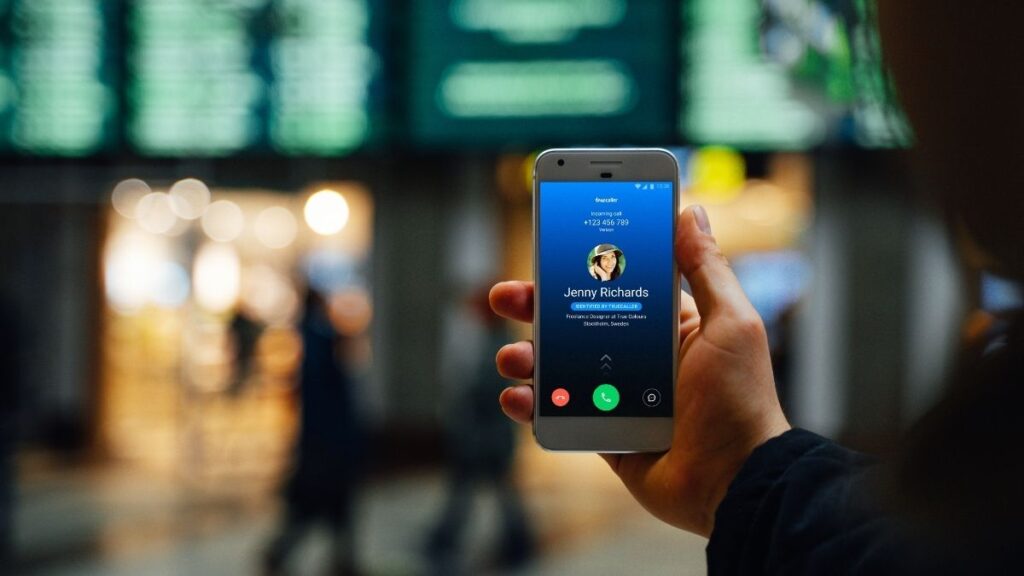
Caller Identification, often called Caller ID, is a feature that displays the caller’s phone number and, in some cases, their name, to the recipient before the call is answered. This information helps people decide how to handle incoming calls, such as prioritizing important contacts and screening unknown numbers.
On CallHub, you validate your phone number(s) for calling campaigns. The number you pick for a particular campaign will go out as your Caller ID (i.e., it will be displayed on your contacts’ screen). A campaign manager can validate multiple numbers on their account and choose a unique one for each calling campaign.
Caller ID makes it critical for the recipient to be made as comfortable as possible with the number and ID they see, if the campaign wants their calls answered. This is why CallHub deploys ‘Dynamic Caller ID’ to enhance Caller ID.
Dynamic Caller ID: CallHub automatically calls from a phone number matching the contact’s local area codes. CallHub’s intelligent systems will match your caller ID to the state, state capital, or the largest city in the state according to the area of the callee.
What metrics should be tracked in inbound calling campaigns?
As a political campaign, it may seem that your role ends with providing the number to make the call, and setting up staff to answer the questions. And then the rest is left upto the voters.
However, considering the campaign’s investment – in terms of money, time, and resources- any campaign manager worth their salt must also measure how the hotline is performing.
Read More: Call Center Quality Assurance: Best Practices, Software, Etc
Only a high performing hotline will swing votes in your favor. Otherwise, this may be a white elephant, that drains the campaign of much-needed resources. Consider these factors to see how your hotline is performing:
First Call Resolution (FCR)
First Call Resolution (FCR) measures the percentage of inbound calls that are resolved on the first interaction without a follow-up or escalation. A high FCR indicates that your staff are well-equipped to handle inquiries efficiently, reducing operational costs. To calculate FCR:
FCR = (Total calls resolved on first contact / Total inbound calls) × 100
Average Time in Queue
Average Time in Queue tracks the time callers spend waiting before connecting with your staff. Long queue times can lead to higher abandonment rates and lower satisfaction. Use this metric to identify staffing issues, optimize call routing, and improve IVR efficiency. It is calculated as:
Average Time in Queue = Total waiting time of all calls / Total number of answered calls
Average Call Duration
Also known as Average Handle Time (AHT), this metric tracks the total time staff spends on a call, including talk-time, hold-time, and after-call work. A lower call duration can indicate efficiency, but if too low, it may suggest rushed or incomplete answers. The formula is:
Average Call Duration = (Total talk time + hold time + after-call work) / Total number of calls
| You can measure agent efficiency through live call monitoring on CallHub. Listening to agent conversations is a highly efficient way to determine the success of your hotline. |
Here’s how it looks on CallHub’s platform:

Satisfaction Score (CSAT)
Customer Satisfaction Score (CSAT) measures how satisfied callers are with their call experience. It is typically gathered through call surveys asking callers to rate their satisfaction on a scale (e.g., 1-5 or 1-10). The CSAT score is calculated as:
CSAT = (Total number of satisfied responses / Total responses received) × 100
A high CSAT indicates positive experiences, while a low score may signal the need for improvements.
To round it up, the idea is that people speak to your staff quickly, have their questions answered thoroughly and promptly, and report later that they are satisfied with their experience.
Give this to callers, and voters will fondly recall your campaign in the polling booth. All the best!

